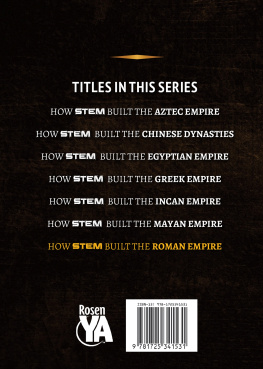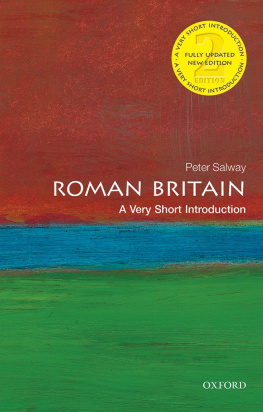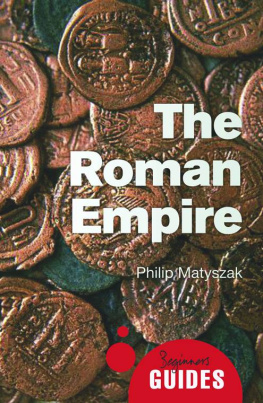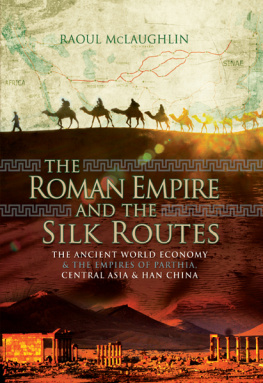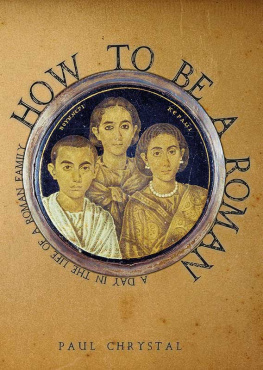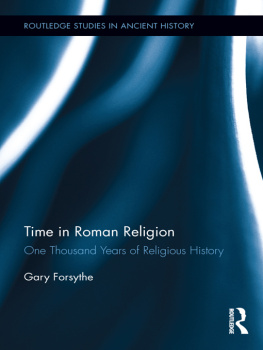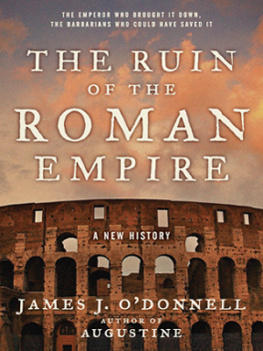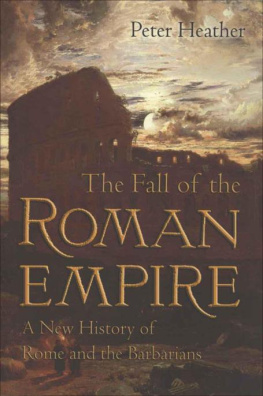The Roman Market Economy

THE PRINCETON ECONOMIC HISTORY OF THE WESTERN WORLD
Joel Mokyr, Series Editor
A list of titles in this series appears at the back of the book.
The Roman Market Economy

Peter Temin

Copyright 2013 by Princeton University Press
Published by Princeton University Press, 41 William Street, Princeton, New Jersey 08540
In the United Kingdom: Princeton University Press, 6 Oxford Street, Woodstock, Oxfordshire OX20 1TW
press.princeton.edu
Jacket art: Detail of cargo ship from road to market with trade symbols in mosaic. Roman, Ostia Antica near Rome Italy. Photo Gianni Dagli Orti. Courtesy of Art Resource, NY.
All Rights Reserved
Library of Congress Cataloging-in-Publication Data
Temin, Peter.
The Roman market economy / Peter Temin.
p. cm. (The Princeton economic history of the Western world)
Includes bibliographical references and index.
ISBN 978-0-691-14768-0 (hardcover : alk. paper) 1. RomeEconomic conditions. 2. RomeEconomic policy. 3. RomeCommerce. I. Title.
HC39.T46 2013
330.937dc23
2012012347
British Library Cataloging-in-Publication Data is available
This book has been composed in Adobe Caslon Pro
Printed on acid-free paper. 
Printed in the United States of America
10 9 8 7 6 5 4 3 2 1
For Charlotte
Contents

Preface and Acknowledgments

This book presents a progress report in the process of understanding the nature of ancient economies. I am an economic historian who spent most of his academic career writing about modern and early-modern economies and teaching modern economics. Sometime before the end of the twentieth century, I became interested in ancient economies. If the Romans wrote all those letters and speeches and built all those roads and buildings, how did they get the resources to do so? Writing takes time and an education that enables a writer to express thoughts in historical perspective. Construction uses materials and labor that have to be organized and gathered for this purpose. How were people able to organize these activities andto broaden our focusbuild something as large and complex as the Roman Empire?
I read Finleys book, The Ancient Economy, when it came out over a quarter-century ago (Finley 1973), and more recent books over the years. I found they did not provide convincing answers to the questions I had raised, and I resolved to investigate further the economics of the ancient world. I published and presented papers to ancient-history conferences over the past decade that resulted from my curiosity. I offer the insights I gained from writing these papers and rethinking them now in light of subsequent research as a progress report that provides a view of the Roman economy that has become more popularalthough not without controversythan when I started on this quest.
I tried to learn a few of the languages needed by ancient historians, but I speedily realized that I would never be good enough to improve on the translations of experts. My comparative advantagea term I explain more fully in the first chapter of this volumeis in economic analysis, not archaeology or text analysis. All scholars stand on the shoulders of those who have gone before, and I freely acknowledge my debt to the generations of ancient historians whose works I utilize. Even if I disagree with their analyses, I respect and envy their scholarship. I struggle also with modern languages, and my citations reflect my preference for English sources. If one has to choose one language for modern scholarship, it would be English, and I am fortunate to be a native speaker. If I repeat analyses published in other languages, I hope that readers will inform me.
I hope also that this book will be received better than my initial foray into ancient history. I wrote a research proposal for myself before I thought seriously about implementing it. I went to Oxford for a conference in 1999 and sent my proposal to a few Oxford people I knew or had arranged to meet. Economists laughed at my proposal at breakfast, and ancient historians laughed at it at lunch. They all assured mefor different reasonsthat my proposal was un-workable. With that stimulus, I had to forge ahead! The proposal grew into my most well-known contribution to ancient economic history. It appeared as Temin (2001) in the Journal of Roman Studies, then under the editorship of an ancient historian who had laughed at me earlier. It set out a research agenda that was fulfilled in the chapters of the middle section of this book.
It may be wishful thinking, but I detect a movement toward an acceptance of modern economic concepts in the study of the ancient world in the past few years. When I started in this field, theoretical discussions of ancient history all started from Karl Polanyi and M. I. Finley. This is apparent in the extensive introduction to the reissue of Finleys book on its silver anniversary in 1999 (Morris 1999). Yet less than a decade later, The Cambridge Economic History of the Greco-Roman World was based more on Douglass North than Moses Finley. North, a Nobel laureate in economic history, emphasized the importance of economic institutions in determining economic performance. His work, together with other like-minded economists, has given rise to what is now called the New Institutional Economics (NIE). Almost all the essays in The Cambridge Economic History of the Greco-Roman World take their cue from the NIE, and the volume itself is organized by consideration of institutions. The essays on the regional development of the Roman Empire start from the premise that preexisting institutions affected how Roman expansion affected their economic activities (Scheidel, Morris, and Saller 2007).
From everything we know, prosperity in Greece and Rome extended beyond a royal family or clan into a larger group of people. I have tried to explore how the Roman economy functioned. I chose to focus primarily on the early Roman Empire because the scale of the Roman Empire was vast and the economy seemed to run amazingly well for a long time. It is one thing to run a small economy drawing small amounts of resources from a broad hinterland; it is much harder to involve millions of people into an integrated economic system. As Wickham (2005, 10) described it, The Roman Empire was a coherent political and economic system, operating on a scale that has seldom since been matched in Europe and the Mediterranean, and never for so long. In addition, we have a lot of information about the economy of the early Roman Empire when peace was more prevalent than war. The Roman information was generated by indirection, and we have to tease out economic information from sources designed for other concerns. This, of course, is the intellectual adventure: how to make sense of the fragments we have to understand the Roman economy.
Next page

